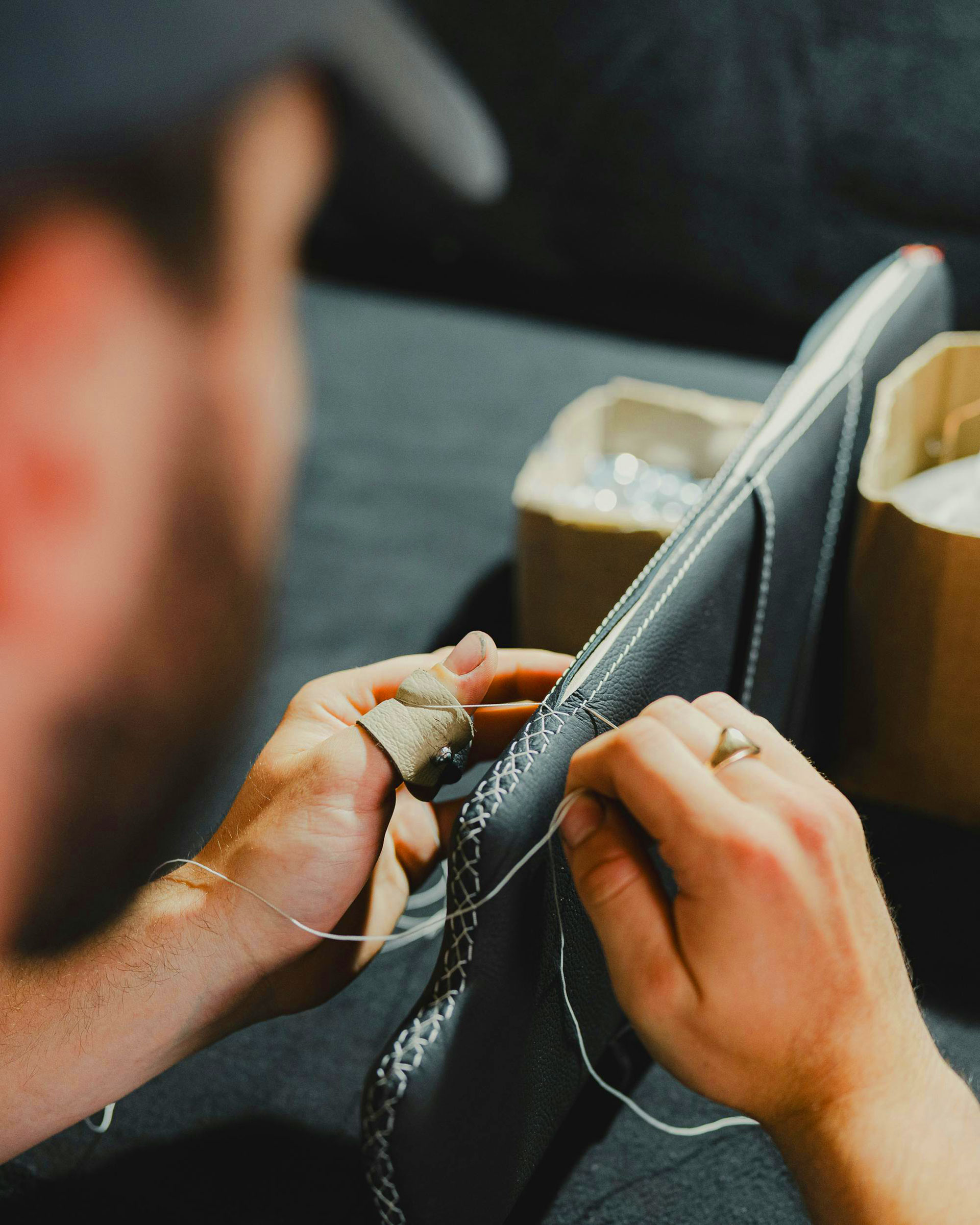
19 Mar Choosing the Right Sewing Tools for Leather—What You Need to Know
Choosing the right tools can make or break a leather project. Leather isn’t like fabric—it’s thicker, tougher, and less forgiving. The wrong tools can lead to uneven stitches, torn material, or hours of frustration. Whether you’re hand-stitching or using a machine, having the right setup ensures cleaner lines, stronger seams, and a more professional finish.
Heavy-Duty Needles for Precision
Standard sewing needles won’t cut it. Leather requires stronger, sharper needles that can pierce without breaking. Look for:
- Diamond-point needles for hand-stitching thick leather
- Leather machine needles with a chisel tip for smooth penetration
- Curved needles for intricate work or upholstery projects
Using the right needle prevents skipped stitches and unnecessary strain on your hands or machine.
Waxed Thread for Strength
Leather projects demand durability, and thread choice is critical. Regular cotton thread frays too easily, leading to weak seams. A waxed polyester or nylon thread offers better strength and resistance to wear.
Thicker thread enhances durability, while a contrasting color adds decorative flair. The right thread ensures each stitch holds firm, even under tension.
The Right Stitching Tools for Hand-Sewing
Machine-sewn leather has its place, but nothing beats the craftsmanship of hand-stitching. The right tools make the process smoother:
- A stitching awl to create evenly spaced holes before sewing
- Pricking irons or chisels for professional-looking saddle stitches
- A stitching pony to keep leather steady while working
Hand-stitching takes patience, but with the right setup, it delivers a timeless, high-end finish.
Choosing a Sewing Machine That Can Handle Leather
Not all sewing machines can handle leather’s thickness and density. A strong motor prevents strain, while a walking foot helps feed the material evenly. Adjustable presser feet are also key—they allow for flexibility when working with different leather weights.
A machine built for leather prevents skipped stitches and makes large projects more manageable.
Conclusion
Sewing leather isn’t just about skill—it’s about using the right tools for the job. Heavy-duty needles, strong thread, precise hand-stitching tools, and a capable machine all contribute to a polished final product.
When you invest in the right equipment, every stitch is smoother, stronger, and built to last.


